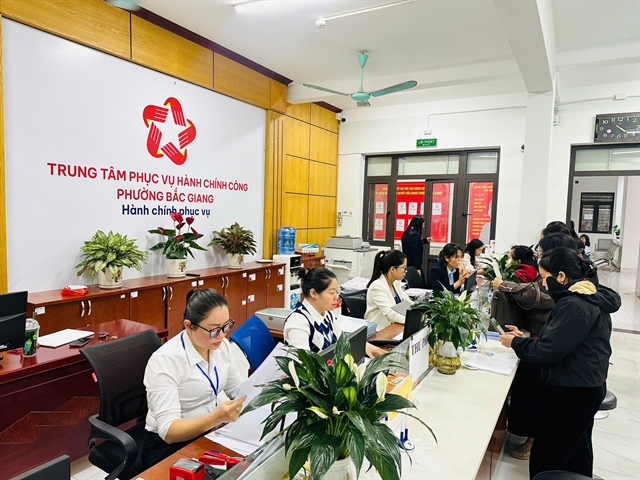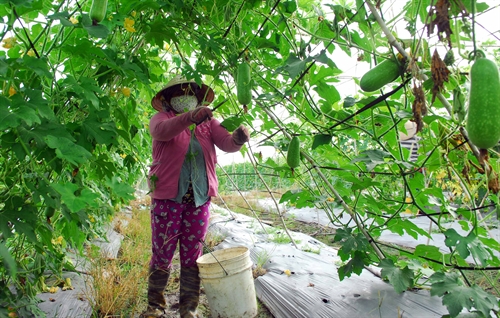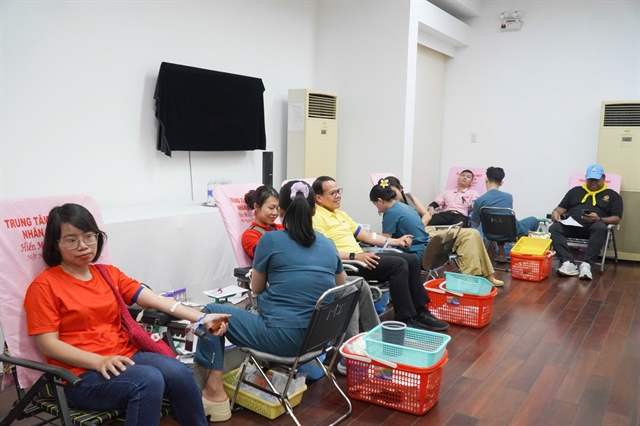 Society
Society

To ensure safe meals for her two-year-old daughter, Trần Mai Linh, twice a week goes to a clean food supply store to buy vegestables and pork to cook for her child.
 |
| A farmer takes care of a safe fruit garden following the Vietnamese Good Agricultural Practices in Củ Chi District, HCM City. Residents’ demand for safe food has rapidly grown. – VNA/VNS Photo Mạnh Linh |
HÀ NỘI – To ensure safe meals for her two-year-old daughter, twice a week Trần Mai Linh goes to a clean food supply store to buy vegetables and pork to cook for her child.
Linh, 28, from Hà Nội’s Ba Đình District, said that she often bought a small amount of clean food for her daughter only and that other family members have to use products from traditional markets.
“I want to buy clean food for my whole family, but I can’t afford to due to the high price of those goods,” Linh said.
Demand for safe food is huge after recent concerns over unsafe food.
However, the price of those goods is higher than goods sold at traditional markets, and it becomes a barrier to consumers.
This is a fact. Price is being blamed for the failure of consumers to access healthy food and it is also one of many reasons to hold back the output of these goods.
Many customers are not ready to pay 30 to 50 per cent more for vegetables, pork and other goods at safe food stores and supermarkets because their incomes remain too low.
Buyers have to pay more money for clean food due to the costs of production, management, certification and transportation.
Most of the companies that produce safe food have to invest a large amount of money in infrastructure and new technology for growing and food quality inspections, good seedlings, and the process of preservation after harvesting and packing.
All those costs have pushed the price of safe goods higher.
Dr Vũ Đình Ánh, an economic expert told Thời Báo Kinh Doanh (Business Times) that there were too many intermediary steps that contributed to the increase in prices.
For instance, Ánh noted that farmers’ dragon fruit were transferred to intermediaries, traders, then retailers and finally at the end to the customer.
The price of 1kg of dragon fruit is increased by VNĐ6,000-7,000 for shipping fees and intermediaries only, he said.
The price is then increased sharply by 40-50 per cent by retailers, the expert said.
Director of Biggreen Safe Food Việt Nam Limited Company, Nguyễn Tiến Hưng, also recognised the cost of transportation has pushed the price of goods higher.
He shared that his company had to transport products from HCM City to Hà Nội by plane to ensure the freshness of many kinds of fruits, and that pushed the price higher.
Lack of co-operation between producers and traders has also made prices increase, experts said.
Most safe food distributors have to pay more for shipping because they only take a small amount of goods to sell, said Đỗ Ngọc Trâm, director of Greenlife Limited Company.
To tackle the high prices, some clean food supply stores in Hà Nội have joined together into a group, she said.
The group members have found safe food sources and together move large amounts to save on transport fees, Trâm said.
Food safety must be ensured from the production stage, which must also get businesses to link up with farmers to build a supply chain, she added. However, the links between farmers and businesses are still limited.
Many experts said the intermediary steps should be reduced to make safe food cheaper.
The State should create more favourable conditions and support linkages between businesses and producers, experts said.
Linh and many consumers, especially those on low incomes, still have to wait for agencies to join hands and help them gain greater access to safe products. - VNS




.jpg)